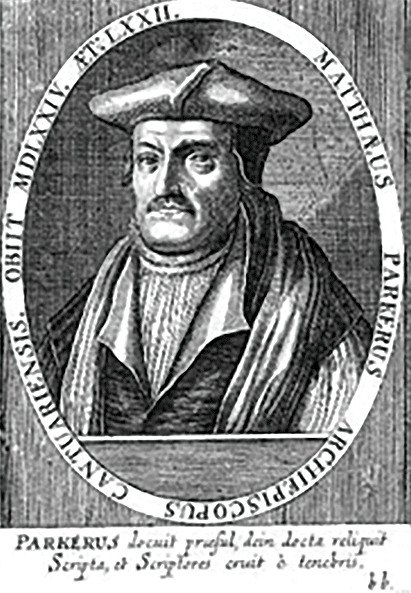A Diligent and Zealous Preacher
Saturday 1st June John Banckes, clad in his long black cassock, would once have been a familiar presence on the streets of Steyning. He came to the town as the vicar in 1559 and here he stayed until his death in 1599. Only two men have served the parish for longer than that – the Reverend John Penfold and the Reverend Thomas Medland – who, during the late 18th and much of the 19th century, notched up ninety years’ service between them.
John Banckes, clad in his long black cassock, would once have been a familiar presence on the streets of Steyning. He came to the town as the vicar in 1559 and here he stayed until his death in 1599. Only two men have served the parish for longer than that – the Reverend John Penfold and the Reverend Thomas Medland – who, during the late 18th and much of the 19th century, notched up ninety years’ service between them.At the mid-point of John Banckes’ incumbency his churchwardens made some brief comments about their vicar. 'Our Vicar servith the cure himself. Mr. Pellett (of Charlton Court) ys patron. He hath no other benefice. Our Vicar ys a diligent and zealous preacher. Our Vicar ys resident. Our Vicar hath fellid certaine timber in the churchyard and hath employed it to his oune use. Our Vicar was married a long time agon.'
They were making the point that he did not split his time between more than one parish or delegate his role to a curate. Also, in emphasising his zealousness in preaching, they were confirming his adherence to the church’s belief that the people needed better instruction in the still relatively new Protestant faith.
Only a few years earlier the Bishop of Chichester had reported that 'except it be about Lewes and a little in Chichester, the whole diocese is very blind and superstitious for want of teaching'. But the wardens do seem to have had a grumble about his felling a tree in the churchyard for his own use. 'Timber’ was the word used to distinguish trees which could be used for structural purposes, and was therefore valuable, from ‘wood’ or ‘underwood’ which could not.
Banckes had regular contacts with his parishioners beyond the walls of his church. A stone mason called William Taylor tells us that 'at Easter yerely' he came 'to the hous of ye said John banckes and in his hall paid his offerynges of two pence where I have seene very many of the parishioners pay theyr offerynges likewise.' Banckes was also called on to write or witness wills.
When Roger Barcombe was on his deathbed 'syck & lying in his nakyd bed in a litle lower parlor of his hous in Steynyng' it was John Banckes who was called for. He was too late, apparently, to write the will but was able to testify to the poor man’s intentions.
Non-payment of tithes was also one of the bones of contention between the vicar and John Leedes of Wappingthorne. Leedes was a Catholic, which would have riled a 'diligent and zealous preacher' like John Banckes. He refused to come to church for which he was persecuted and, for a while, left Wappingthorne and became a 'beyond-sea-gadder' and 'a fugitive beyond the sea.' Yet he was also a major contributor to repair funds for the church and paid £100 to the Armada fund.
So the two men must have had a complicated relationship which was exacerbated in 1585 when Leedes refused to pay his tithes on 'Threscore Acres of medowe ground aperteynyng to Wapyngthorne within the parish of Steynynge . . which three score Acres so mowed & cut there was hey made of yt.' It was said that 'the valure or estymacyon of every acre of the said threescore acres of Hey was worth 8 shillings of laufull mony.'
John Banckes, serving the community for forty years, must have provided continuity and stability during troubled times – even though, during most of these years, his own thoughts would have been occupied by what to do about the church’s chancel, tower and transepts which were all falling into disrepair.
Article by: Chris Tod - Steyning Museum.